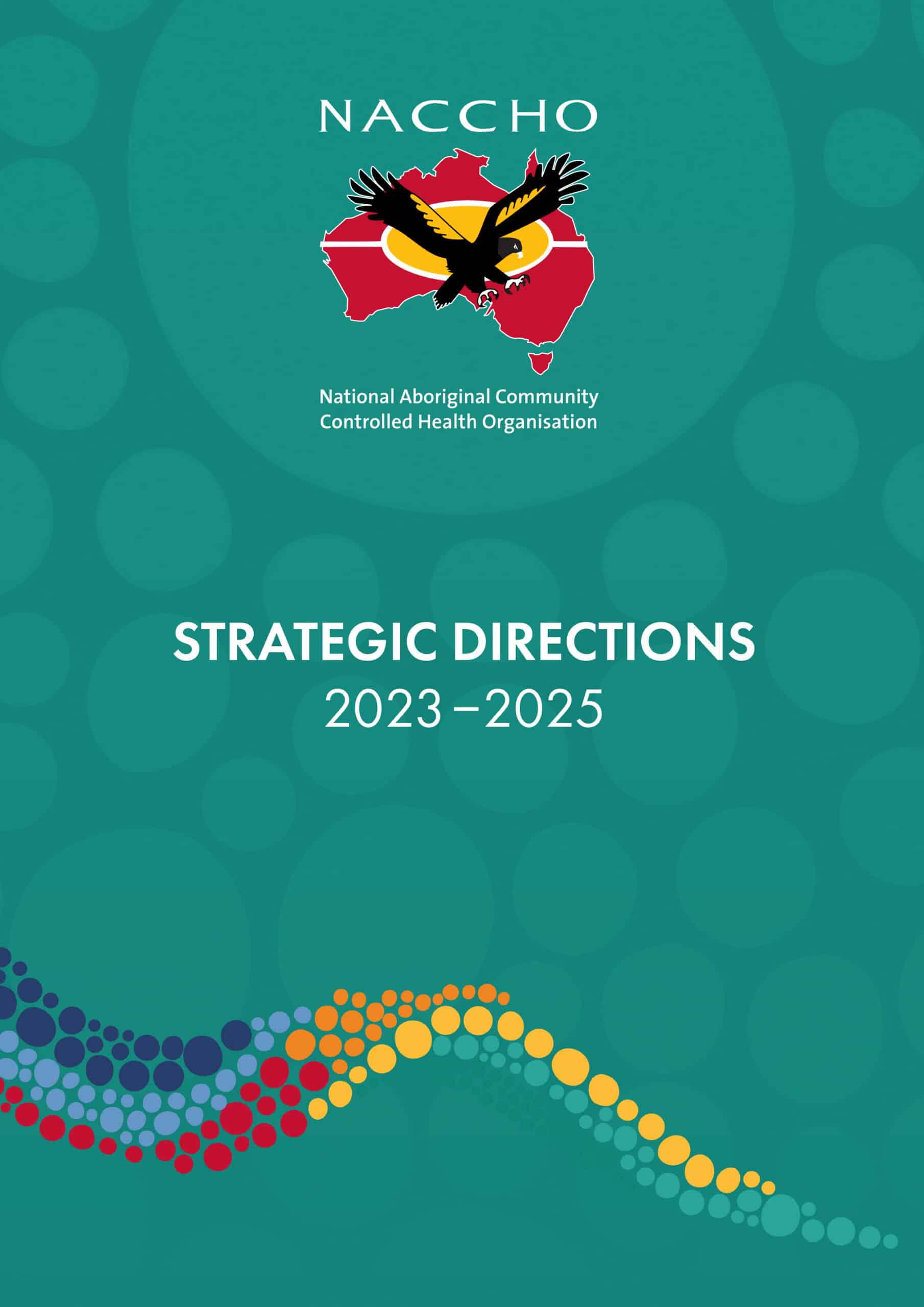Strategic Directions 2023–2025
NACCHO is the national leadership body for Aboriginal and Torres Strait Islander health in Australia. It provides informed advice and guidance to the nine Australian governments and a range of stakeholders on policy and budget matters that will contribute to the quality of life for Aboriginal and Torres Strait Islander people.
NACCHO represents 145 Aboriginal community-controlled health orgnisations (ACCHOs). Collectively, we have well over 50 years of experience since the first ACCHO was established in Redfern in 1971. Our members operate over 550 clinics providing comprehensive primary health care to Aboriginal and Torres Strait Islander people across Australia. Our sector provides over 3.1 million episodes of care each year for over 410,000 people. In very remote areas, our services provide about one million episodes of care each year. Few organisations can boast a national service footprint that includes such comprehensive coverage, including so many remote areas.
The Aboriginal and Torres Strait Islander population has a growth rate of 2.0-2.3 per cent per year (almost twice the non-Indigenous population growth rate of 1.3 per cent). Therefore, there is a need to advocate successfully for targeted additional resources to address this growing need and to contribute in closing the health gap. The Australian Institute of Health and Welfare (AIHW) calculates that the burden of disease for Aboriginal and Torres Strait Islanders is 2.3 times higher than that of other Australians. In an independent report published by Equity Economics in May 2022, the health funding gap is $4.4b per year, or about $5,000 per Aboriginal and Torres Strait islander person each year. This debunks the dangerous myth that Aboriginal programs are over-funded. The health funding gap must close if the health gap itself is to close. Each year, NACCHO sets out a way forward with its pre-budget submissions to Treasury.
Our model of community-controlled effective health care was proven in the pandemic. With the higher incidence of comorbidities, we had feared a death rate equivalent to that experienced by other First Nations Peoples around the world, but swift action to protect our communities meant that the impact on our people has been significantly below estimations.
NACCHO’s vision is:
Aboriginal people enjoy quality of life through whole-of-community self-determination and individual spiritual, cultural, physical, social and emotional well-being. Aboriginal health in Aboriginal hands.
NACCHO’s Strategic Directions describes the four key strategies that NACCHO will focus on over the next three years. Within each strategy, a number of specific elements and deliverables are set out. Strategies and actions recognise Aboriginal and Torres Strait Islander cultural diversity across remote, rural, regional and metropolitan Australia.
DOWNLOAD
PDF version of NACCHO’s Strategic Directions 2023-2025.
